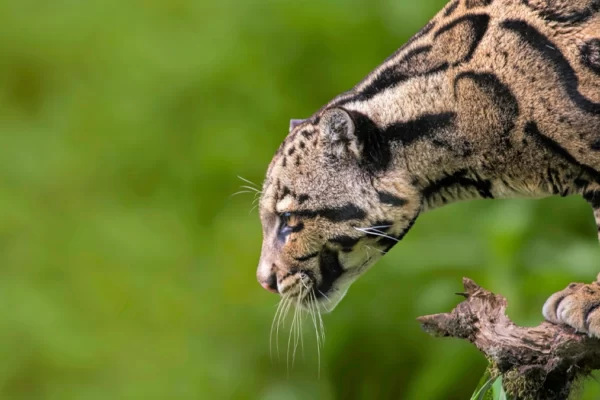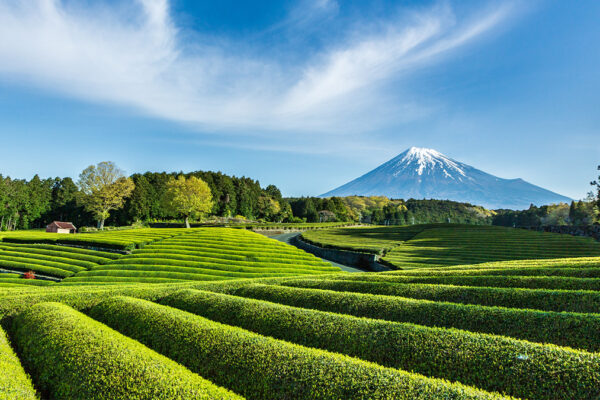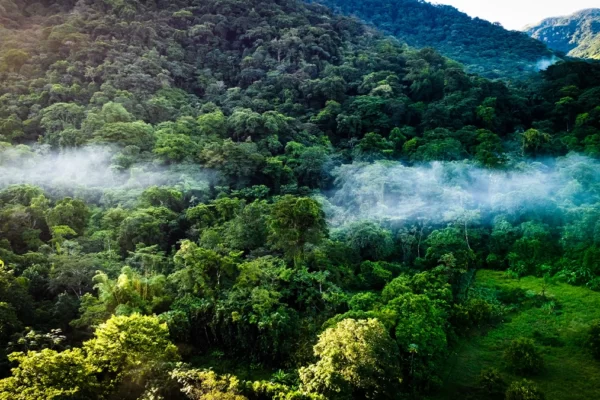2023 IUCN Red List: Record Number of Endangered Species and Hope through Conservation Efforts
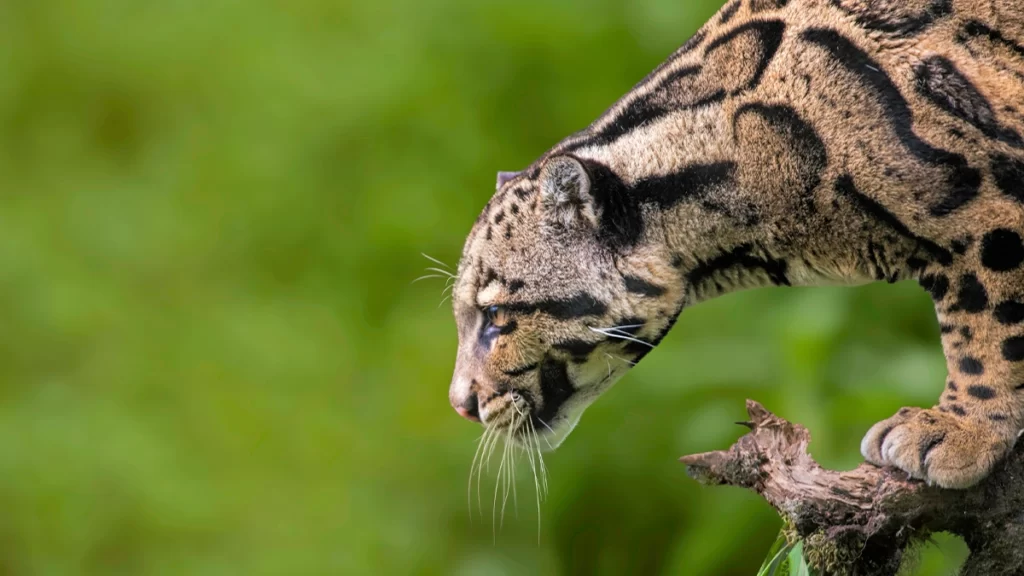
On December 11, 2023, the International Union for Conservation of Nature (IUCN) announced the latest list of endangered wildlife, the “IUCN Red List,” at the United Nations Climate Change Conference COP28 held in Dubai, United Arab Emirates. The release of the Red List during a climate change conference is a first, marking the unveiling of the 2023 edition.
In the 2023 edition, a total of 157,190 species were assessed, with approximately 28%, or over 44,000 species, declared to be at risk of extinction.
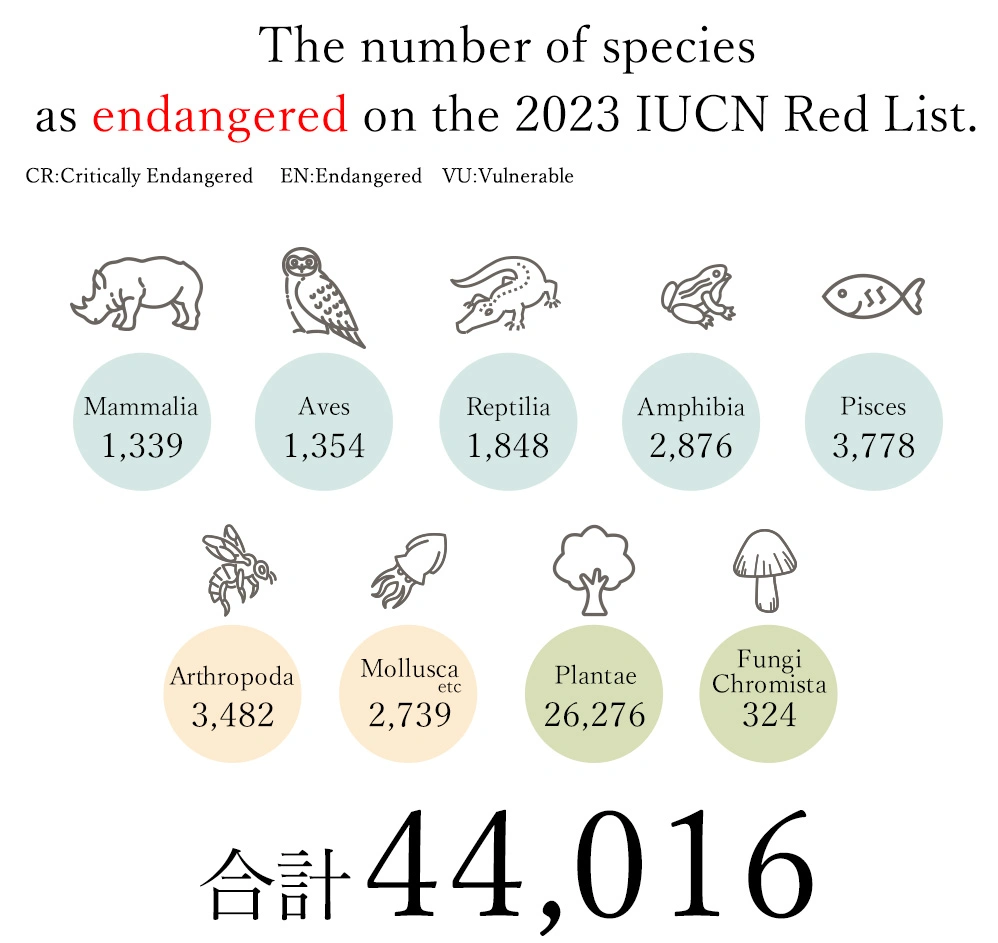
http://www.iucnredlist.org. Downloaded on [ 5/1/2024 ].
The IUCN Red List, often referred to as the “barometer of life,” currently assesses 157,190 species, with a target of 160,000 species, leaving 2,810 species yet to be evaluated. It serves as a crucial indicator for understanding the status of global wildlife, identifying species in need of conservation, and determining where conservation resources should be allocated. The list of endangered species released in 2023 is the largest to date, highlighting the profound impact of human activities on wildlife.
Number of Endangered Species by Region (Quoted from the 2023 Edition of the IUCN Red List)
Number of Critically Endangered (CR), Endangered (EN), and Vulnerable (VU) Species by World Region
- Antarctic (53)
- Caribbean Islands (1618)
- East Asia (2184)
- Europe (2986)
- Mesoamerica (3931)
- North Africa (513)
- North America (2051)
- North Asia (415)
- Oceania (4796)
- South America (8714)
- South and Southeast Asia (8149)
- Sub-Saharan Africa (10835)
- West and Central Asia (1516)
Number of Critically Endangered (CR), Endangered (EN), and Vulnerable (VU) Species in East Asian Countries
- China (1537)
- Hong Kong (125)
- Japan (634)
- Korea, Democratic People’s Republic of (136)
- Korea, Republic of (217)
- Macao (34)
- Mongolia (52)
- Taiwan, Province of China (452)
IUCN Red List of 2023 reports the number of endangered species in Japan.
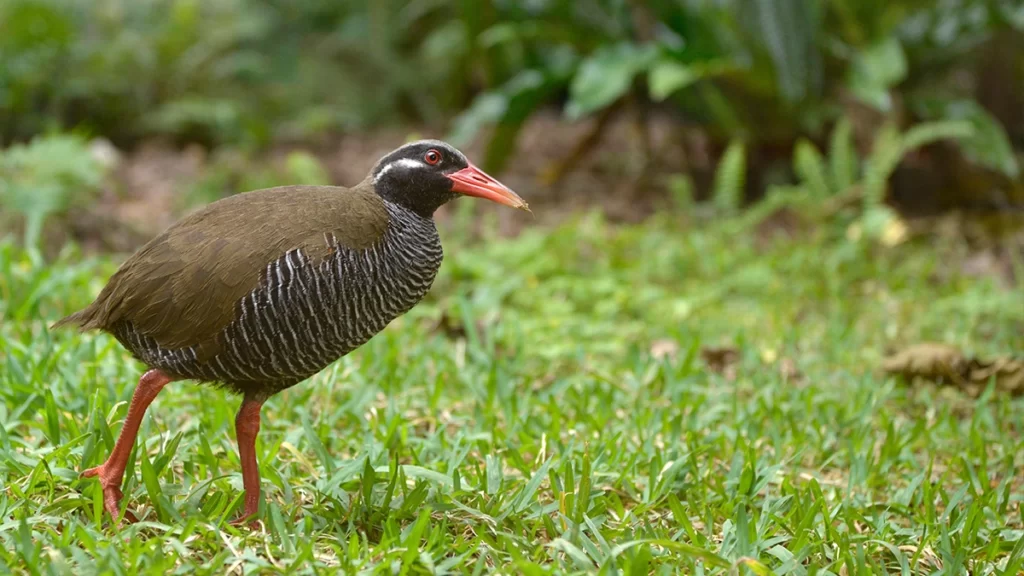
In the 2023 edition of the IUCN Red List, the number of endangered species in Japan is reported to be 634. Among them, 86 species are classified as critically endangered (CR), with a significant representation of fish species.
Despite being surrounded by the sea and originally having a unique ecosystem, Japan is considered a “biodiversity hotspot,” where many species are facing the threat of extinction. It is recognized globally as a crucial area for biodiversity conservation. The issue of endangered species is not limited to distant regions; there is a need to shift awareness towards nature positivity starting from our immediate surroundings.
Number of Critically Endangered (CR), Endangered (EN), and Vulnerable (VU) Species in Japan
- Hokkaido (13)
- Honshu (83)
- Kazan-retto (2)
- Kyushu (33)
- Marcus I. (1)
- Nansei-shoto (103)
- Ogasawara-shoto (41)
- Shikoku (24)
IUCN Red List of Threatened Species
https://www.iucnredlist.org/ja
Climate change is significantly impacting freshwater fish species worldwide, even those familiar to us.
The Atlantic salmon (Salmo salar) is often encountered in Japanese supermarkets. Astonishingly, it has been revealed that its population has decreased by 23% in just 14 years, from 2006 to 2020. Consequently, it has been reclassified from the category of Least Concern (LC), indicating low risk, to Near Threatened (NT), signifying a looming threat of extinction. As a fish that migrates long distances between freshwater and marine environments, climate change is considered one of the contributing factors affecting every stage of the Atlantic Salmon’s life cycle.
Most of the salmon found in supermarkets are farmed, and currently, there is no immediate risk of extinction. However, without adequate measures, the potential for transitioning to a high risk of wild extinction exists, especially with the progression of climate change and water pollution. Additionally, farming practices, such as cultivation in non-native regions, escapees negatively impacting local ecosystems, and issues related to high-density farming causing water pollution, pose various challenges to aquaculture.
Realizing that even familiar species on our dinner tables are in danger of extinction could serve as a catalyst for those who haven’t connected with nature positively before. I encourage you to take a look at the Red List provided by the Japanese Ministry of the Environment or the Red Lists of local municipalities in your area. This could be an opportunity to perceive environmental issues as something close and relevant, even for those who might not have resonated with the concept of nature positivity before.
Ministry of the Environment – Species Log: Red Data Book
https://ikilog.biodic.go.jp/Rdb/
Species whose category has been lowered due to an increase in population.
“Nature positive” refers to the practice of preventing species from becoming extinct and working to recover their populations. In terms of Red List categories, it involves the need to transition species to categories with lower levels of urgency.
For example, due to the impact of local community conservation efforts, three species of Asian storks have been reclassified to lower-threat categories. Particularly in the Indian state of Assam, where conservation activities have improved the lives of women, there has been positive transformation, and awareness campaigns have become more prevalent in other regions as well.*1
In Japan, conservation efforts for the stork are active, and there are considerations to downgrade its conservation status domestically.
The African Scimitar-horned Oryx (Oryx dammah) has been downgraded from Critically Endangered (CR) to Endangered (EN) due to conservation efforts, while the Saiga Antelope (Saiga tatarica) inhabiting Kazakhstan, Mongolia, Russia, and Uzbekistan has been reclassified from Critically Endangered (CR) to Near Threatened (NT). Both species experienced a significant decline in population due to factors like poaching and climate change, but active conservation initiatives led by governments and local communities are contributing to population recovery.*2
While none of these species are entirely out of danger, it is undeniable that the effectiveness of conservation efforts is becoming apparent amid critical situations. This serves as a beacon of hope for a nature-positive future.
*1 Freshwater fish highlight escalating climate impacts on species – IUCN Red List
https://www.iucn.org/press-release/202312/freshwater-fish-highlight-escalating-climate-impacts-species-iucn-red-list
*2 The 2023 Red List update reveals hope for birds in crisis
https://www.birdlife.org/news/2023/12/12/the-2023-red-list-update-reveals-hope-for-birds-in-crisis/






